
| Oleander (synonym : Nerium indicum Mill.) APOCYNACEAE | & Don Herbison-Evans ( donherbisonevans@yahoo.com) |
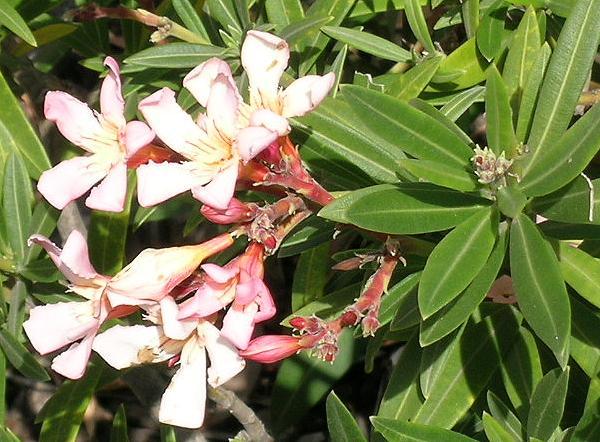

| Oleander (synonym : Nerium indicum Mill.) APOCYNACEAE | & Don Herbison-Evans ( donherbisonevans@yahoo.com) |

The Oleander has suffered from poor press over the years and that is a great shame for it is a tough beautiful shrub which should come into to its own in these new drought filled years. The plants easily cope by the seaside, not seeming to be worried with salt laden air; in arid hot conditions, and even where the drainage is poor. When conditions are perfect the Oleander is unmatched for sheer drama as it swathes itself in blooms for months on end.
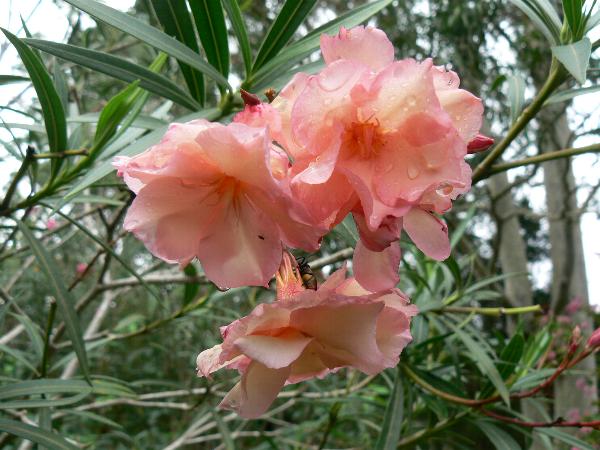
Oleanders prefer full sun but will tolerate some shade. Once established they need no extra watering, surviving through the toughest of droughts and the hottest of summers (it can even cope with reflected heat from buildings), as well as surviving through cold winters and the occasional frost. That said it would not be our first choice in a place with long, cold winters as it does best in a temperate to sub-tropical climate. It doesn’t like to grow in soil which never dries out either, such as soggy, boggy spots, but that shouldn’t be a problem in most Aussie gardens.
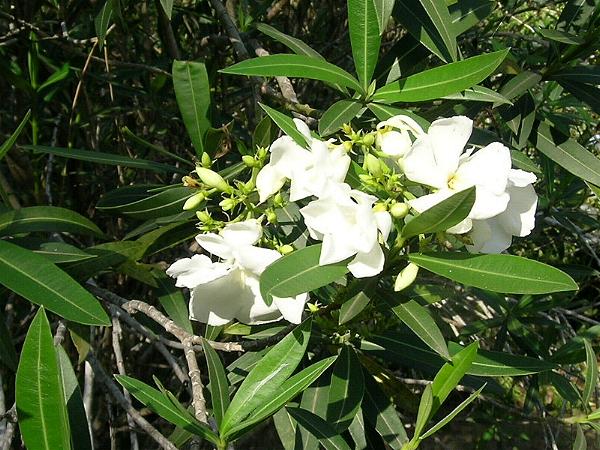
The shrub, if allowed its head, can grow to two metres or more but can be trimmed to the size that you prefer. It is evergreen with dark leathery leaves which are about 15cm long. It has beautiful, sweetly scented flowers, mostly in red, peachy pinky, and apricot tones, though there are some soft yellows, as well as a clear white. The flowers on a happy Oleander can completely cover the bush for months on end. The blooms can be either single or double, depending on the variety. There are even dwarf varieties available, to be grown either in containers or to fit into today’s much smaller back yards.
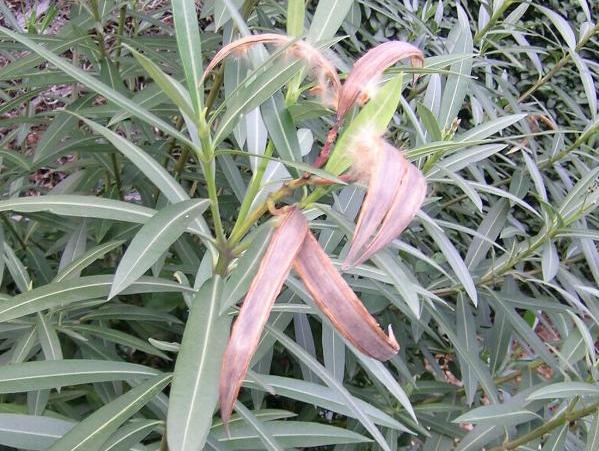
With all those beautiful colours, perfume and toughness why is it so maligned? The harm it is supposed to do is based on the urban myth of a swagman long ago who is supposed to have stirred his boiling porridge with a stick from a nearby Oleander bush, and died when he ate his porridge. So the answer is that it is said to be poisonous - if you choose to eat it. However it grows beside many a playground without harming a single child as the leaves are so bitter that one suck or bite would be quite enough to deter further tasting.
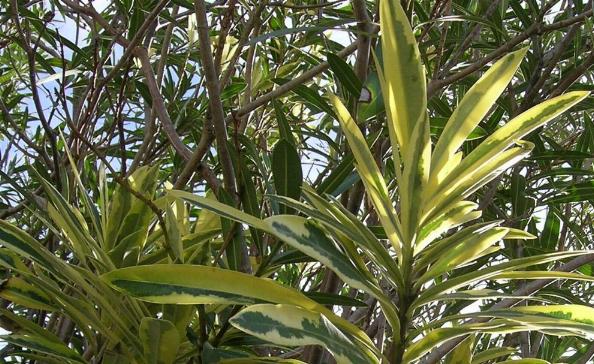
The aim when growing plants for butterflies is to encourage lots of new young leaves and shoots, so an annual shearing of the Oleanders, cutting back the branches by 1/4 to a 1/3 will do it no harm. The main flush of flowers is in late spring to early summer so cutting back behind the flowers works well. I would also plead for a little bit of messiness in your garden. Don’t pull every weed, nor trim every shrub. Have a wild section for the birds and butterflies.
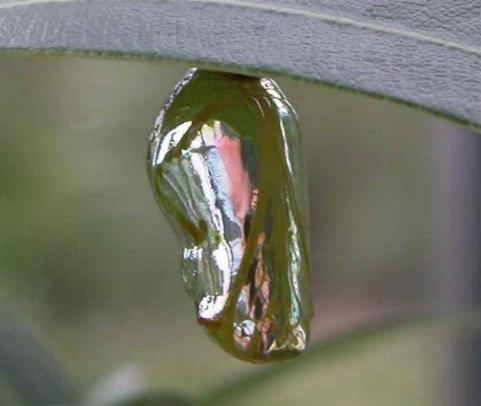
Many children and adults too for that matter are intrigued by the beautiful silvery cocoons of the butterfly Euploea corinna which grows to maturity on the leaves of the Oleander.
return to
Flowers in Australia
(updated 24 August 2007, 16 June 2020)